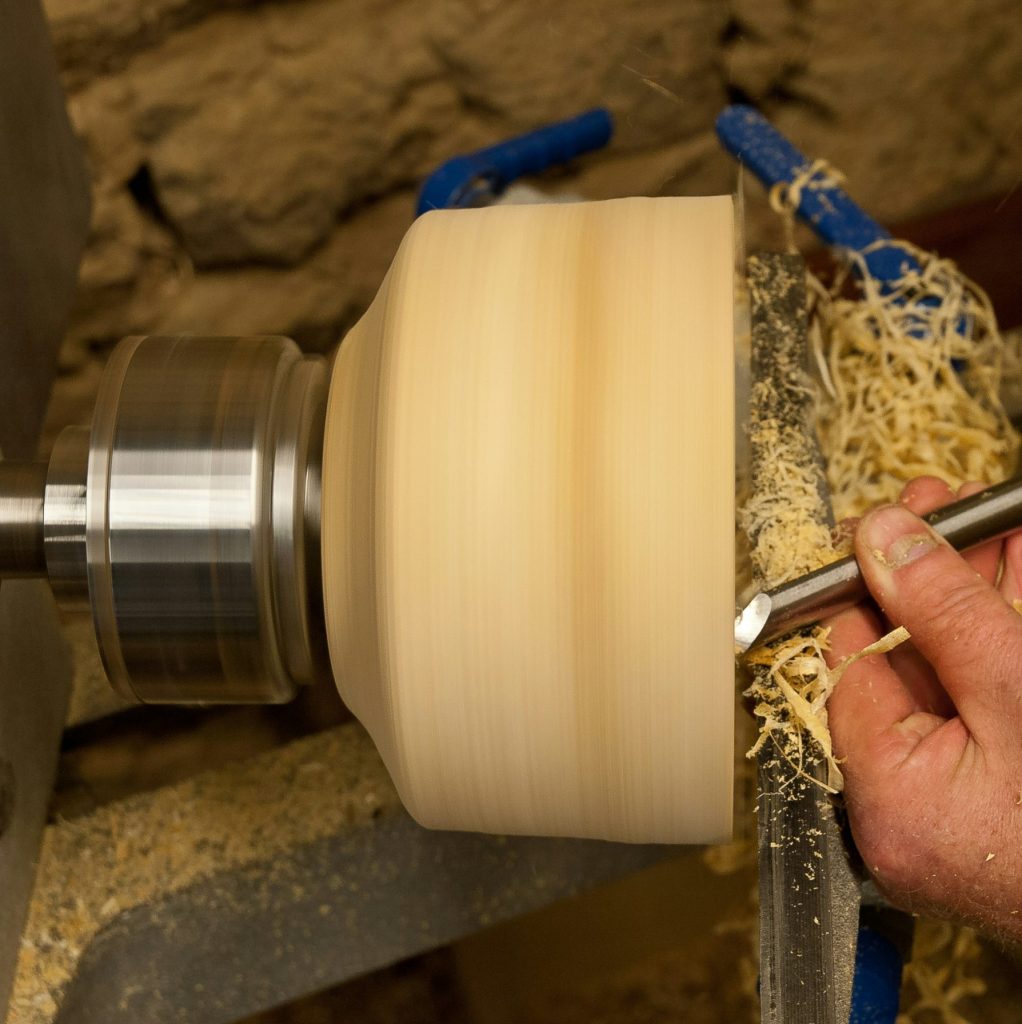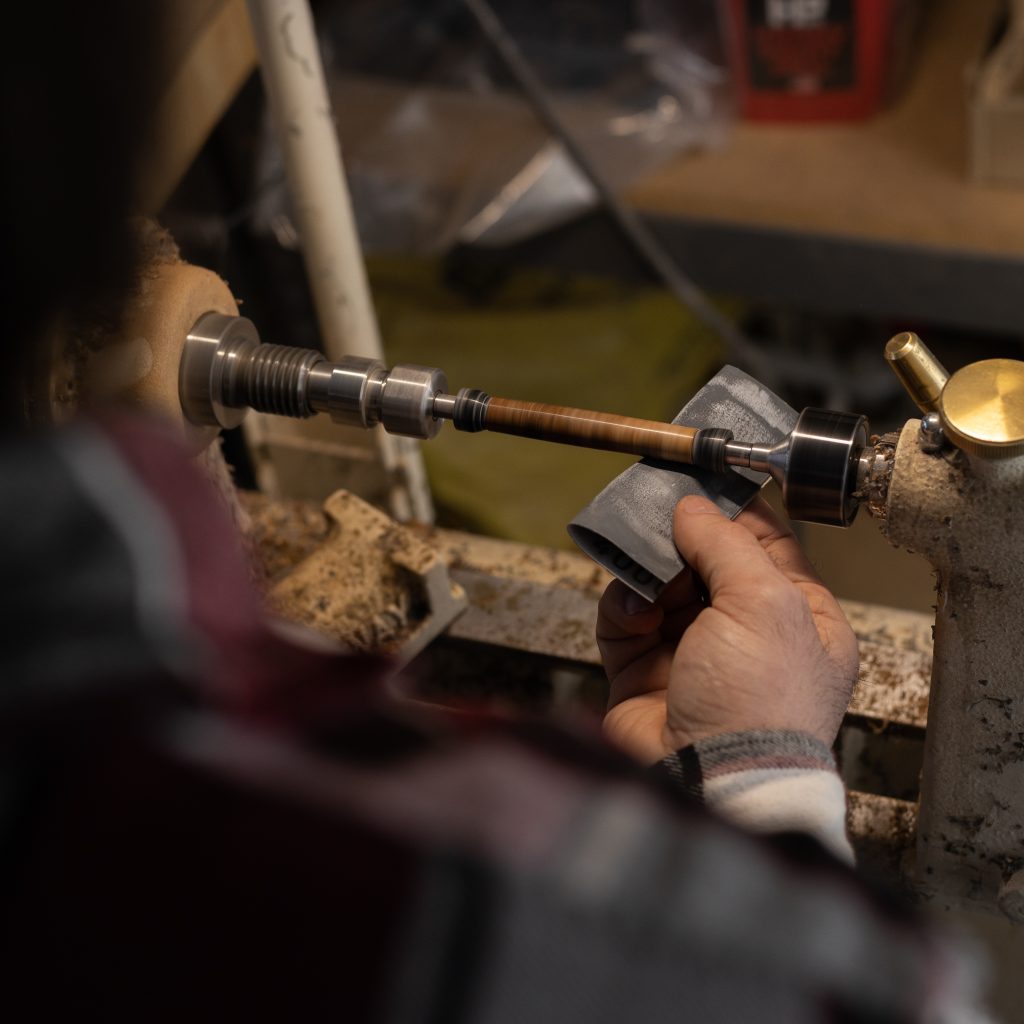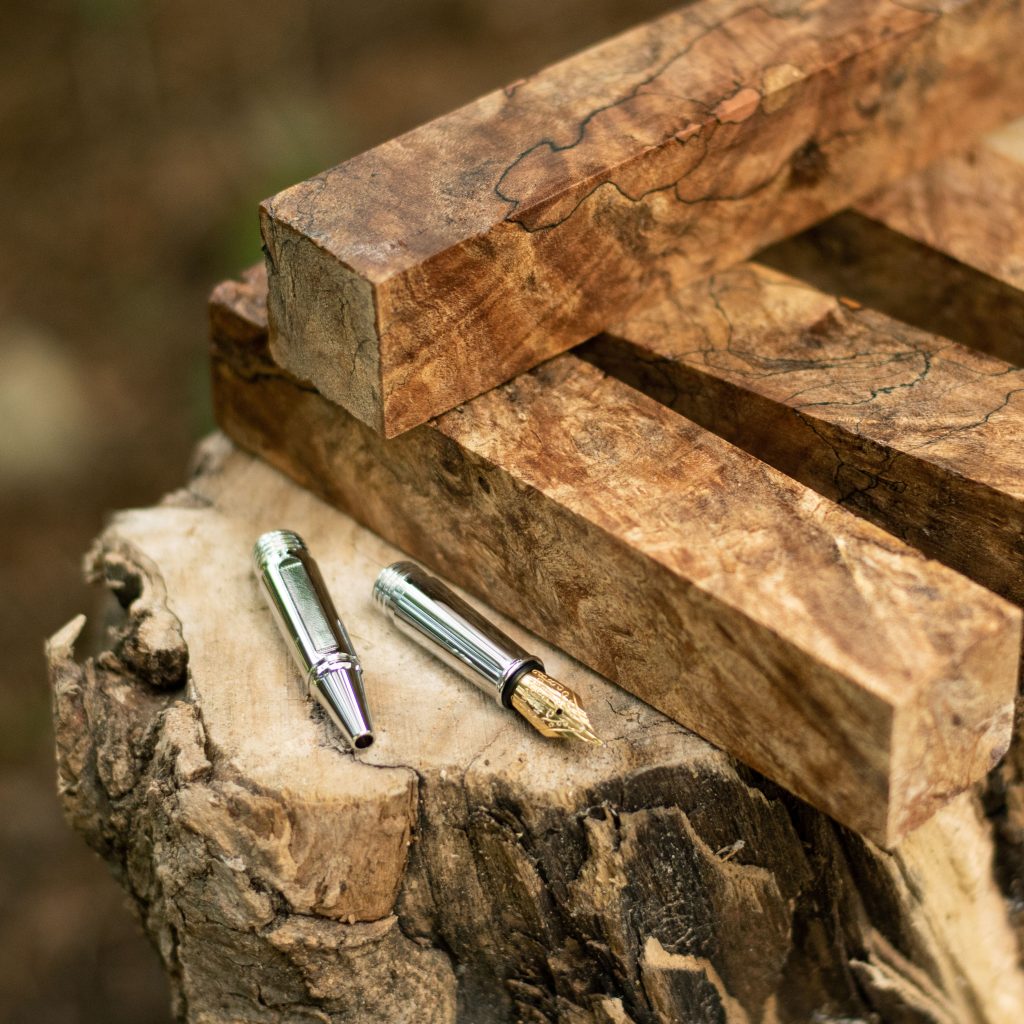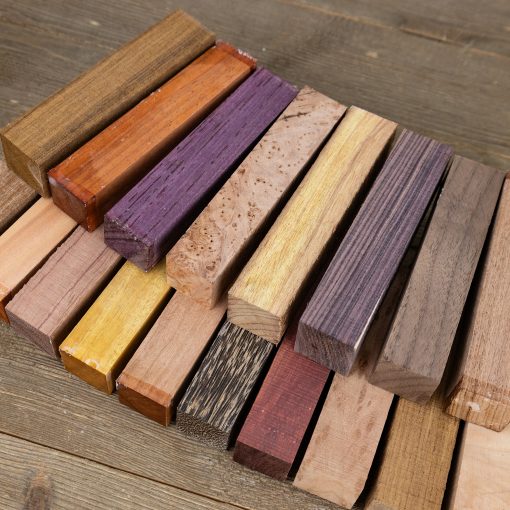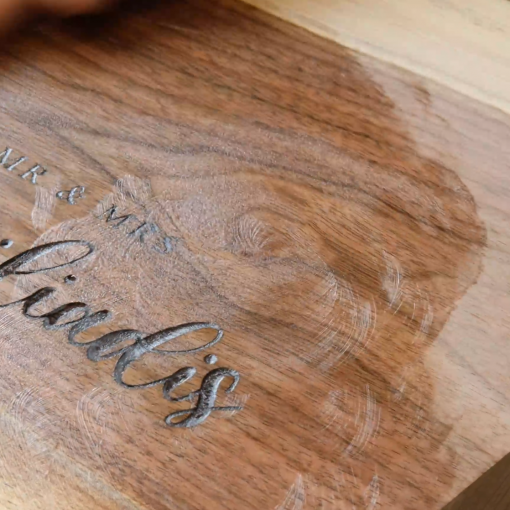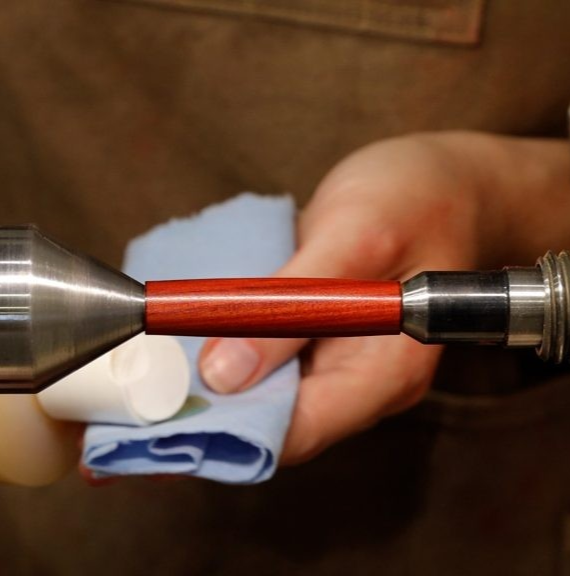
There is an overwhelming number of choices when it comes to finishing your custom pens and other lathe projects. Some people swear by wax and oil products, while others always turn to shellac to get that deep, glossy look. When deciding what polish to choose when shopping for woodturning supplies, it comes down to factors like shine preference and wood type. Wax, oil, and shellac, or mixtures of all three, produce different results.
Polishing wood with wax on a lathe
A common ingredient in finishing polishes is wax. Sometimes pure wax is used, but usually it’s mixed with other materials. The most popular waxes in woodturning are beeswax and carnauba wax. Both are natural, food-safe and non-toxic. They also come from environmentally friendly renewable resources. On its own, beeswax tends to be on the sticky side, so it’s almost always mixed with other products. Carnauba wax is also often mixed but is sometimes used in pure bar form.
Our beeswax pick: Clapham’s Beeswax Polish made from beeswax with a little carnauba wax and deodorized mineral spirit solvent.
Pure carnauba wax
- One of the hardest waxes in the world due to its high melting point.
- Can applied directly to your wood while it’s spinning on the lathe or transferred via a buffing wheel.
- The heat generated by friction will help it melt and spread over the wood grain.
- Provides a durable and very high gloss finish.
- Tends to be brittle and can be difficult to apply.
- Our pure carnauba pick: Carnauba wax bar.
Using oil as a finish in wood turning
Another go-to finishing product in wood turning is oil. Like wax, sometimes oil is applied all on its own, but often it’s mixed with other ingredients to maximize results. Oil highlights the grain, adds a natural sheen and in some cases protects the wood. Some kinds can be used for surfaces that come in contact with food such as cutting boards or utensils.
Tung oil
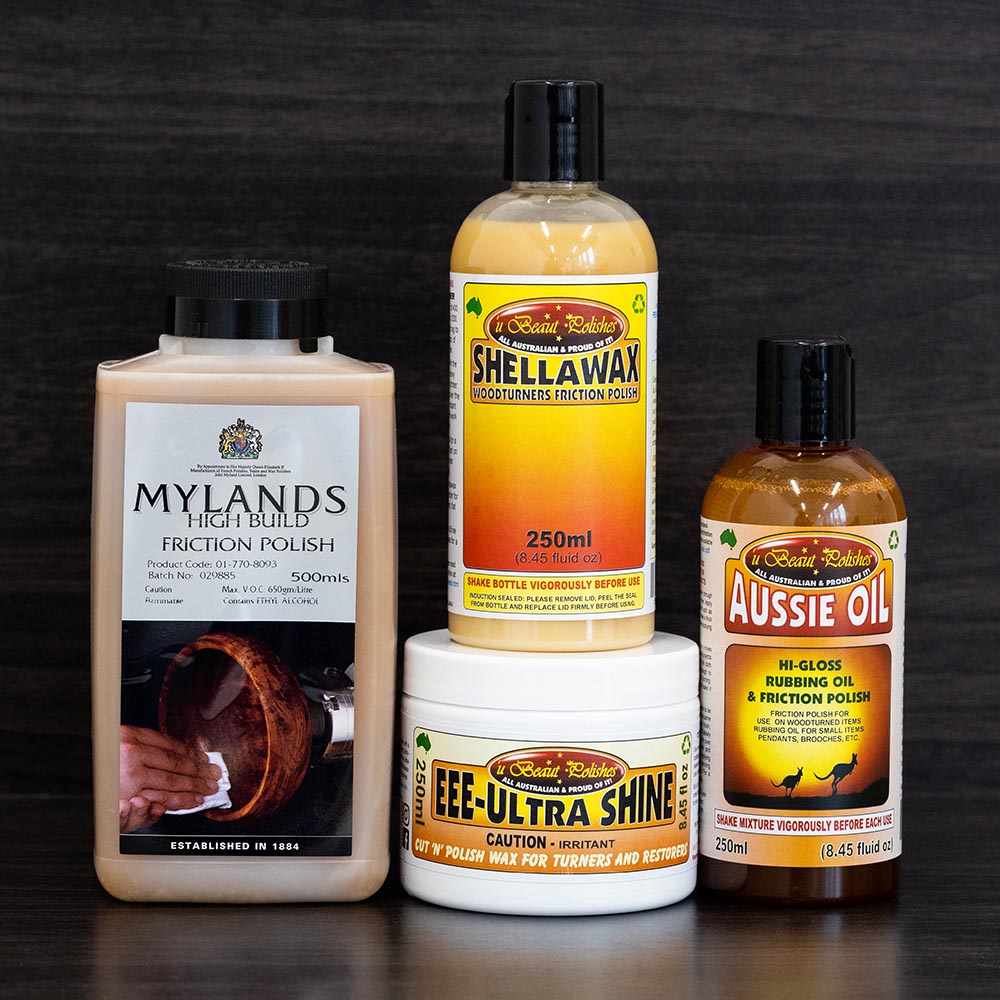
- Tung oil is derived from the seeds of the tung tree.
- Penetrates deeply into the wood fibers, enhancing its durability and resistance to moisture, making it useful for pens and the handles of kitchen utensils.
- Enhances the natural beauty of the wood grain with a rich warm appearance.
- Darkens slightly over time.
- Requires multiple applications for the best results and pure tung oil can take up to 30 days to cure between coats.
- Many products combine this oil with other ingredients that shorten the curing time.
Linseed oil
- Linseed oil comes from flax seeds and is safe to use on wood turned items that come into contact with food.
- Easy to apply with a cloth or brush but requires multiple coats and a long drying time.
- Often mixed with other ingredients in finishing products..
- Used alone it provides a satin finish, some protection and moderate water resistance, but will need to be reapplied occasionally.
- There are two types of linseed oil: raw and boiled. Raw linseed oil is natural and has a longer drying time, while boiled linseed oil has drying agents added to it to quicken the process.
- Rags soaked in linseed oil can spontaneously combust if not handled properly, so they must be laid out to dry completely before disposal to prevent this.
- Our linseed oil pick: Craft Coat Wood Finish is made from linseed oil and waterborne urethane.
Walnut Oil
- Walnut oil is natural, non-toxic and easy to apply.
- Requires multiple coats, is slow drying and will need to be reapplied now and again when used alone.
- Will not turn yellow over time like some oils, making it ideal for light coloured woods like maple or ash.
- Doesn’t contain any VOC’s (volatile organic compounds), which means there are no harmful fumes or bad smells during use.
- In some rare cases, nut allergies can be triggered by walnut oil.
- Our walnut oil picks: Doctor’s Woodshop made with carnauba wax and sometimes shellac and Mahoney’s Food Safe Oil Wax Finish made with walnut oil, carnauba and beeswax.
Using shellac on handmade wood items
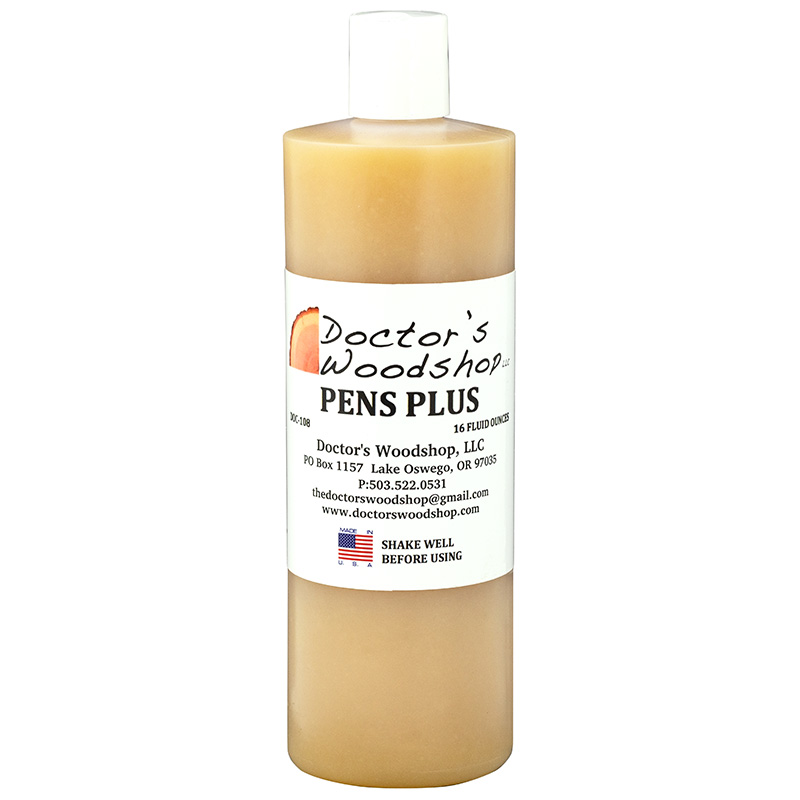
People are sometimes surprised to learn that shellac comes from an insect. The lac bug secretes a resin onto trees which is harvested, processed and then dissolved in alcohol to be used as a wood finish. It has a quick drying time and is applied with a brush, cloth or even a spray. It produces a high gloss finish and can be found in various colours. The down side of shellac is that it’s less durable than some products and can become cloudy when exposed to too much water, alcohol or heat. However, it makes an excellent sealant under other finishes. Our pick of products containing shellac: Aussie oil, Doctor’s Woodshop Pens Plus, Mylands High Build Friction Polish
Sometimes shellac is confused with lacquer. While they’re both used in wood finishes, lacquer creates fumes that require it to be used in a well-ventilated space. Lacquer is known for being extremely durable and producing a long-lasting clear gloss. Our lacquer-based pick: PSI Super-Gloss Lacquer-Based Friction Drying Polish
Blends of oil, wax, shellac and lacquer for finishing lathe projects
Most finishes are a blend of two or more of these ingredients. When mixed together, they each bring something to the table and create a range of products with differing results. Your decision will be based on durability, food safety concerns, aesthetics and what you happen to be making. In the end, the best way to decide is by trying different techniques and products. Don’t miss out on the wide selection of polishes at William Wood-Write when searching for the perfect finish for your custom wood turned crafts and pens.
